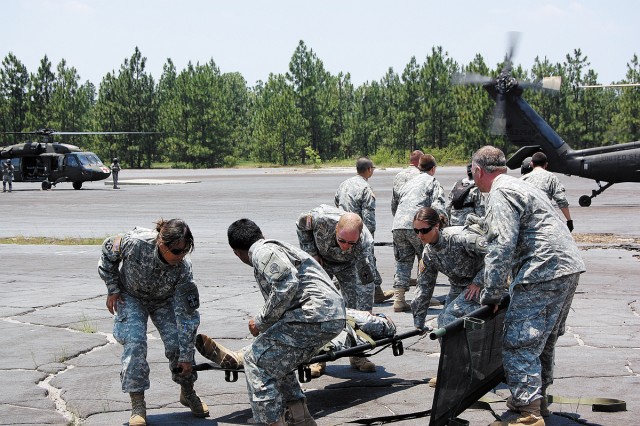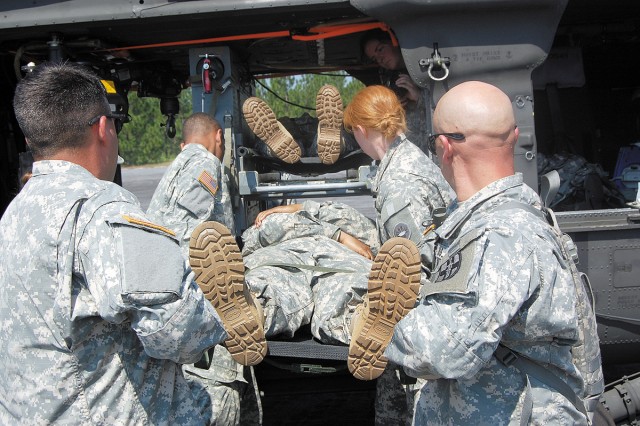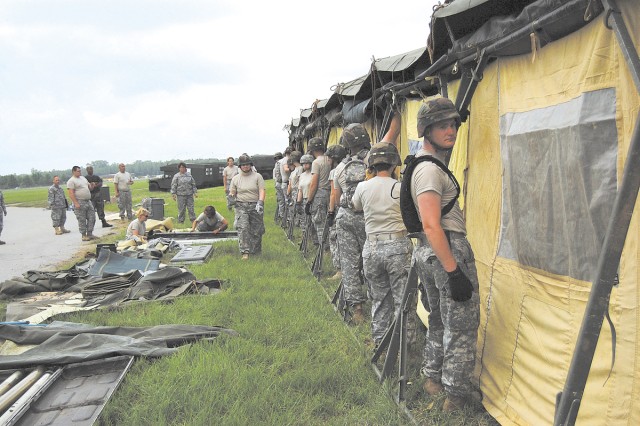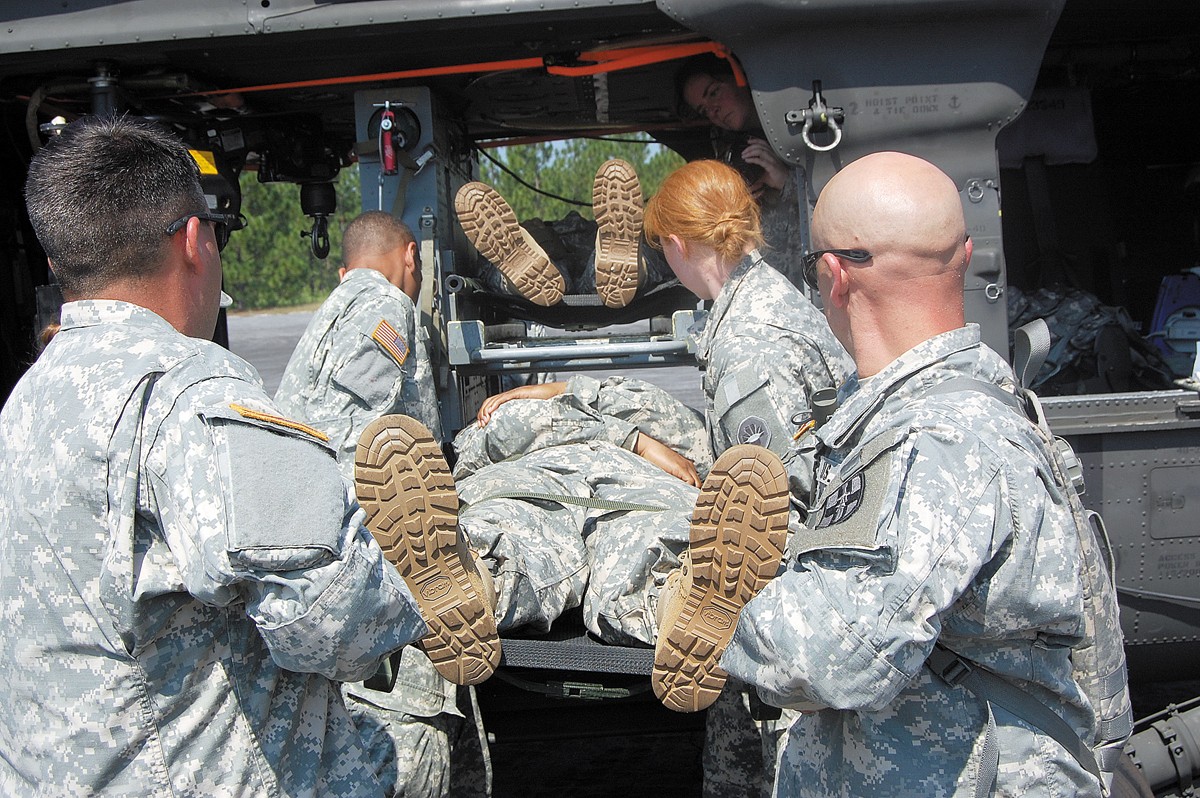FORT GORDON, Ga.--(June 10, 2009) The leading wave of hundreds of Soldiers from various Army advanced parties poured into Fort Gordon June 6 to set up and kick off a two week exercise for about 600 Army personnel.
Global Medic is the Army Reserve premier exercise incorporating joint assets to provide large scale training in planning, preparing and executing operations as part of a deployed task force. The exercise replicates all aspects of war fighting functions on the battlefield and allows units to train as they operate.
"We are here to learn, mentor and to demonstrate to everyone around us that the 332nd Medical Brigade is the most prepared medical brigade in the Army," said Col. James Snyder, exercise commander from the 332nd Medical Brigade. "It is important that Soldiers understand that they are on a real world mission, know why they are here and receive realistic training."
This year GM will operate at Fort Gordon, Ga., Fort McCoy, Wis., and Fort Hunter-Liggett, Calif. The exercise will build upon the successes of the first GM held in 2008 and its predecessor exercise Golden Medic held during previous years.
The 332nd Medical Brigade, Nashville, Tenn., has command and control of nearly 20 units participating in the exercise at Fort Gordon. "Units from across the United States are participating," said Capt. Judith Brown, 332nd Med. Bde. G-1."
Units participating in the event includes those from Texas, New York, Kentucky, Colorado, Utah, Kansas, Alabama, Connecticut, Georgia, Mississippi, New Jersey, North Carolina, Pennsylvania and Tennessee.
Most medical units sent an advance team in order to stage tactical operational command tents, living tents, communication equipment, the hospital, the mess hall, shower points, washing points, and much more in order to set up their main body personnel for mission success.
"We [in the G-1 administrative section] prepare personnel reports and daily updates," said Brown. "We track people leaving, people coming, anyone who gets sick. Our goal is know who is here and who is not so we have accurate accountability. The 461st (Human Resources Company) in-processed everyone who came in and they usually have scanners to help them do that, but their scanners were down and they overcame and were still able to process everyone quickly and efficiently while giving the in-country briefing as well," said Brown. "I was really impressed."
Preparation for GM began last year at the end of the last exercise. "We have been in contact with all units to get personnel reports for the whole time," said Brown, "We would reconcile their personnel needs and worked to fill them and it has worked out really well."
During the year, the 332nd Med. Bde worked with every unit including U.S. Army Reserve Command, Medical Readiness Training Command, and the Air Force to prepare for the exercise by holding an initial planning conference, mid-planning conference, final planning conference and staff exercise.
"The conferences allowed us to meet and coordinate with counterparts from other units," said Sgt. Maj. Robert Ketchum, 332nd Med. Bde. operations noncommissioned officer in charge. "And the staff exercise provided us the opportunity to determine our weaknesses and address them accordingly."
"The exercise is very important," said Snyder, "If the Soldier doesn't know then we will fail and every commander needs to know that failure is not an option."






Social Sharing